Home » Posts tagged 'water' (Page 6)
Tag Archives: water
Barrels, Buckets, and Bottles: Adventures in Low-Water Living
Barrels, Buckets, and Bottles: Adventures in Low-Water Living

Water is invisible to most people in developed countries.
We turn on the tap, and there it is. It’s provided free in restaurants, without our even asking for it.
We can spend money to buy water in bottles, but in America at least, we’re never far from a water fountain.
There have been revelations recently of lead or other contaminants in water supplies, but still the concept of a universal “water supply” is rarely questioned.
Water for Granted
This easy access to water is not the case in many places on earth and was almost never the case in the past. And it’s looking like it will not be the case in the future, as sea-level rise threatens fresh water supplies, energy resources are depleted, political systems lack the will or ability to maintain infrastructure, and climate change creates unpredictable rainfall and temperature patterns around the globe.
If our water systems collapse, or if we decide to simplify voluntarily, individuals and households may be surprised at the lifestyle changes that will be necessary. What we own, how we use it, and even our domestic architecture will be affected.
This was something I had to learn during two years without running water in Liberia and seven years with erratic running water in Kyrgyzstan. I offer my experiences in living without reliable water sources not because I’m the expert.
There are millions of people around the world who have managed their whole lives on a tiny fraction of the water we consider necessary. But perhaps I can describe to you what living with unpredictable water is like and make it less daunting.
…click on the above link to read the rest of the article…
Panicked Hong Kongers Hoard Food, Water, Supplies Amid Coronavirus Hysteria
Panicked Hong Kongers Hoard Food, Water, Supplies Amid Coronavirus Hysteria
Now that striking health-care workers have successfully forced Carrie Lam’s government to close most of its border links with the mainland and dramatically restrict travel from elsewhere in China, a full-on panic has engulfed the city, fueled by “malicious rumors” about supply shortages, Reuters reports.
Chaos has erupted in some areas as supermarkets have imposed limits on how many items customers can buy. Hundreds of shoppers have thronged aisles of supermarkets as they struggle to buy up as many consumer staples – rice, water, meat, noodles etc. – as they can again on Friday. Chinese-ruled Hong Kong has reported 25 cases of the virus and one of only three deaths outside the mainland.
“Everyone’s snatching whatever they can get. I don’t even know what’s going on,” said a 72-year-old woman surnamed Li as she clutched two bags of toilet rolls.
The situation in Hong Kong right now is incredibly tense. Many still have horrible memories from the SARS outbreak of 2002-2003, which killed roughly 300 people as it swept through the city. But the scare also comes after months of anti-Beijing protests by the Hong Kong pro-democracy movement.
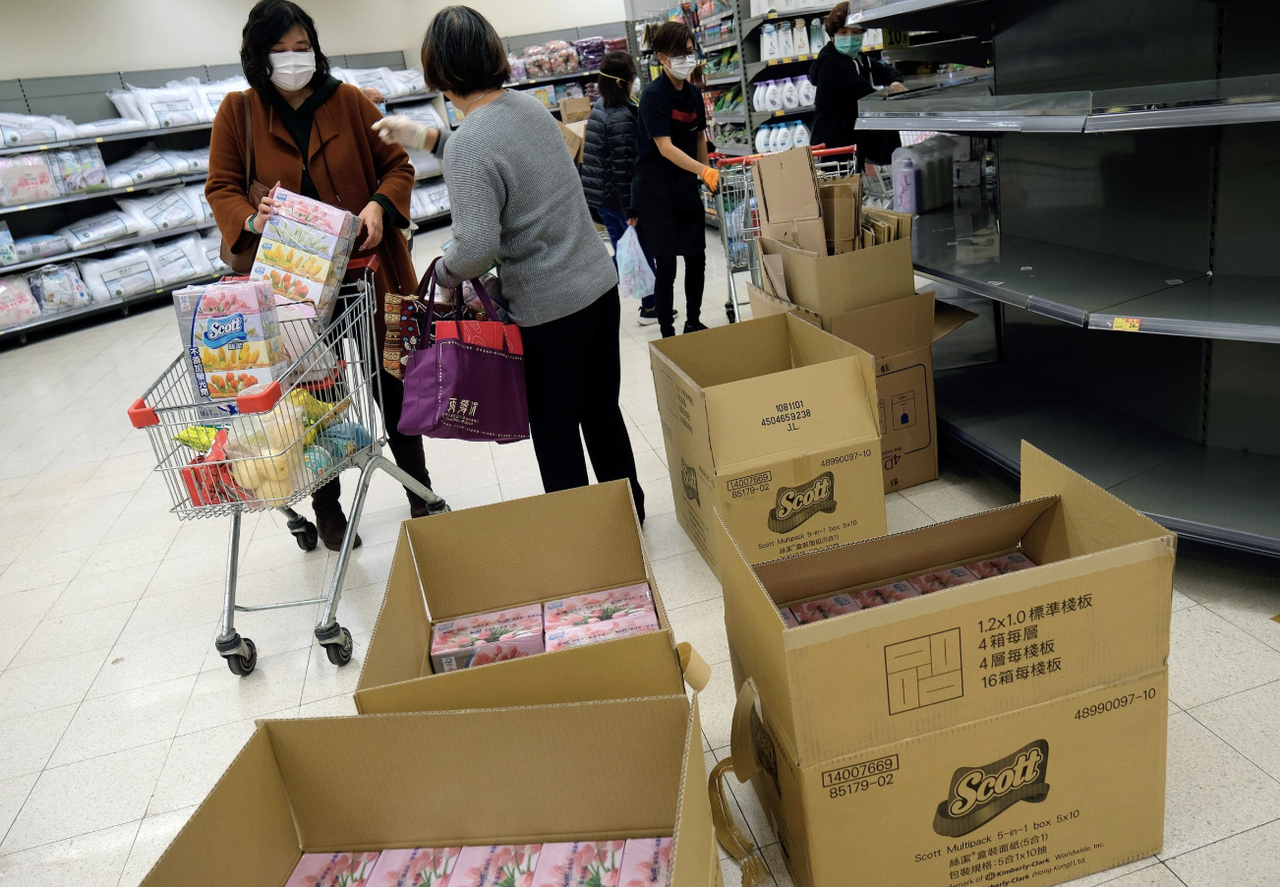
Already, Matthew Cheung, chief secretary for administration, said that Hong Kong people returning from the mainland must stay home for a fortnight or risk a $3,200 fine and up to 6 months in jail. Non-Hong Kong residents must stay in government isolation centers or hotel rooms for the same period, facing the same penalties.
“Self discipline and having everybody in Hong Kong fighting…this infectious disease is the most important thing,” said Sophia Chan, the city’s health secretary.
There was some good news in Hong Kong: Thousands of medical workers who had been on strike this week to press the government to close the border voted to suspend their action on Friday night, though they said they would continue to pressure the government for tighter measures to suppress the outbreak.
…click on the above link to read the rest of the article…
Vital Implications on Water Scarcity According to 14 Experts
Vital Implications on Water Scarcity According to 14 Experts

With factors as precarious as climate, failing infrastructure, increased global population, pollution, and excessive groundwater pumping, it is no wonder that the concern for water scarcity has garnered the attention of authorities across many agencies and sectors.
And while those in developed countries might not experience the effects of the water crisis as imminently as those in more water-stressed regions of the world, the reality of water scarcity is ultimately a global concern and should certainly be treated as such.
Solutions such as demand management, culture and policy change, and improved infrastructure are practical and achievable – contrived through extensive research and collaboration. Because combating the global water crisis is such a complex issue, it requires a multi-pronged, multi-disciplinary approach.
Read our Related Article: 9 Viable Water Scarcity Solutions
In this article, we’ve asked water experts in the NGO, government, academic, and private sectors to share their candid opinions on water scarcity and to shed light on potential and practical solutions.
We’ve asked the question:
In your opinion, what are the main contributing factors to our current global water crisis and what actions do you believe are most crucial in mitigating it as best as humanly possible?
The following are their answers.
Causes and Solutions to the Global Water Crisis

Read our related article: 10 Critical Water Scarcity Facts We Must Not Ignore
Democratize Access to Information
The main contributing reason is that public policy has failed to adequately address water scarcity, poor quality and lack of access of water for economic development, business growth, social well being and ecosystem health. We have framed this failure as the “Day Zero” which obscures the underlying issues of overallocation of water, lack of incentives for sustainable water use and the realization that the past is not a guide to the future.
…click on the above link to read the rest of the article…
6 Ways to Recycle Water
6 Ways to Recycle Water
Water is an important part of our lives, and something we take for granted. Learnings ways to conserve water will help during droughts, economic hardships, keeping the utility bill down and conserving our vital natural resources. Here are 6 ways to conserve water from the home.
Watching the aftermath unfold during recent major disasters, has caused many of us to wake up and start finding solutions to be better prepared and more independent. One of these solutions is finding ways to conserve water for later use. Instead of looking forward to the future to find the answers, we are turning our heads back to the past, to our forefathers. Many have begun to grow gardens, care for livestock, and started learning self-reliant practices.
Conserving water is an important aspect of preparedness and homesteading alike, and also something that every home can begin practicing. These conservation methods teach individuals the importance of frugality, prudence and self-reliance. Using water consumption calculators is a great way to start researching how much water is used on a daily, weekly and monthly basis. When a person gets an idea as to how much water is used in the home, they can begin making appropriate changes.
Here are six easy ways to conserve and recycle water for later use:
1. Use rain collection barrels. This is one of the most efficient ways of collecting water. Because the barrels come in different sizes, you can adjust your conservation method to how you see fit. If a person does not have rain collection barrels, they could use buckets placed out in the yard to collect water. The stored water can be used for a short or long-term needs. As well,because rain water lacks all the chemicals added to tap water, it can be used for other purposes such as feeding livestock, or watering the garden with.
…click on the above link to read the rest of the article…
10 Critical Water Scarcity Facts We Must Not Ignore
10 Critical Water Scarcity Facts We Must Not Ignore

Why is water scarcity a legitimate concern?
It is true that the hydrologic cycle, the process in which the earth circulates water throughout its ecosystems, is a closed-loop cycle that neither adds nor takes away water. In theory, the amount of water on earth will always remain the same.
The problem therein is when the hydrologic cycle is disrupted and water which normally gets distributed to a certain area no longer does so. This is precisely why some regions are becoming arid while others are experiencing flooding and other natural disasters.
In this article, we’ll discuss the role that humans play in the global water crisis and we’ll cover the 10 most alarming water scarcity facts that we shouldn’t ignore.
The Alarming Human Factor in Water Management
Humans play a large role in the disruption of the hydrologic cycle.
- The excessive building of dams prevents rivers from distributing mineral-rich water to areas that are dependent on the nutrients for plant growth.
- Pollution caused by large factories can render freshwater sources such as lakes and rivers unusable.
- The constant paving of roads seals the surface of the ground, preventing it from soaking up rainfall and replenishing the underground aquifers, a very vital part of the hydrologic cycle.
- Excessive drilling into the ground can disrupt the structure of the bedrock, potentially allowing fresh groundwater to be contaminated with seawater.
- Bottled water privatization creates a monopoly on a resource that should otherwise be available to the people who live in the region where the water is located.
As the world’s population increases the demand for the required amount of water necessary to sustain large communities does as well. While water is involved in the sustenance of virtually every aspect of a human’s life, the production of food makes up the majority of it.
…click on the above link to read the rest of the article…
Save The World By First Saving Yourself
Save The World By First Saving Yourself
We each have a role to play in how the world recovers from the coming crisis
Ripped from today’s headlines:
- Negative Interest Rates Are Coming And They Are Downright Terrifying (Yahoo! Finance)
- Earth’s Lungs Are Burning: Amazon Rainforest Which Contributes 20% Of Planet’s Oxygen Is On Fire
- What’s in our water? Report warns of growing ‘invisible’ crisis of pollution (The Guardian)
- Plants are going extinct up to 350 times faster than the historical norm
From news reports like these, it’s understandable to think that our future looks bleak.
At this point we can only ride out the consequences as the systems we depend on collapse and then ebb away — exposing that the structure of our modern way of life is really a just an edifice built of sand.
That may be true. But not necessarily.
I’m here with some good news today. There remains a multitude of options that each of us can and should do to prepare for what lies ahead. And in so doing, we can help to avert the worst of it, as well.
But only if enough of us try. Critical mass is key here.
Yes, the world is busy collapsing around us. That’s true.
But collapse is a process, not an event. It can be ameliorated and even reversed, depending on the actions we decide to take from here.
And there’s still time left to change our fate. Not much, mind you. But enough to matter.
The good news is that more and more people are heeding the call and taking action. The bad news is that too many still aren’t.
And the worse news is that the many entrenched powers of the status quo are working against our future best interests, as they desperately cling to old notions of advantage, wealth, and privilege.
…click on the above link to read the rest of the article…
‘I Want Them to Have Justice’: Inside the Fight to Save the Shubenacadie River
‘I Want Them to Have Justice’: Inside the Fight to Save the Shubenacadie River
In Nova Scotia, water protectors have fiercely opposed a gas company’s plans for a decade, helped by a celebrity supporter.

It is so quiet on the banks of the Shubenacadie you can almost hear the river breathe.
Standing by the Treaty Truckhouse with Rachael Greenland-Smith and Dale Poulette, the instinct is to fall silent. The landscape draws you in with elemental power — an Alex Colville painting come to life.
Blue sky above, tawny long grass below, all of it bisected by the reddish tidal waters of the Shubenacadie. The only sound is the flapping of the Indigenous Unity flag when the wind picks up from the river.
The RCMP didn’t want any flags flying on nearby Treaty Island, but Mi’kmaq water protectors felt they had no choice. They believed that the Alton Gas company’s storage project, which would dump huge amounts of brine into the Shubenacadie, would endanger the river.
The company wants to build massive underground caverns to store natural gas. It would use river water to flush out salt deposits at a site 12 kilometres away, creating the caverns. The salty water would then be pumped back into the river over a few years.
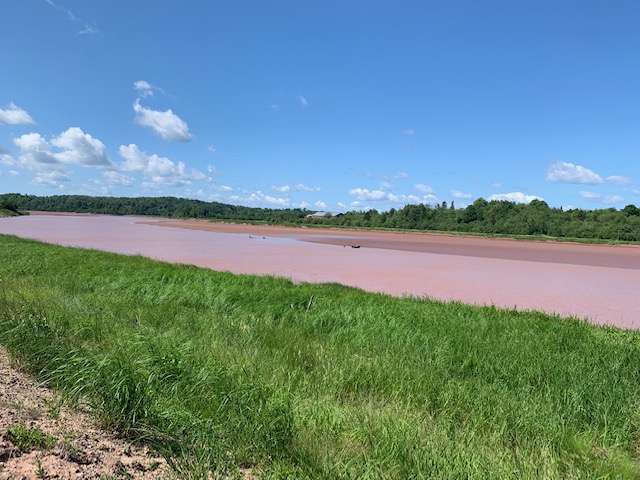
…click on the above link to read the rest of the article…
‘You can’t drink money’: Kootenay communities fight logging to protect their drinking water

‘You can’t drink money’: Kootenay communities fight logging to protect their drinking water
In Glade, where clear-cutting could begin any day, determined residents are pulling out all the stops in an effort to protect their local creek — even though a judge ruled they have no right to clean waterSarah Cox Jul 20, 2019 17 min read
Four years ago, on a morning hike with her husband, Heather McIntyre spotted red and white flagging tape near a creek that supplies much of the drinking and irrigation water for her village of Glade in a pastoral Kootenay valley.
The tape marked logging boundaries and roads and was stamped with “KLC,” the initials of a local timber company, Kalesnikoff Lumber Co., which planned to log in the community’s watershed on the slopes of a low-lying Selkirk Mountain in the interior rainforest.
“We kind of panicked,” said McIntyre, who lives in a yellow strawbale house amidst a patchwork of fruit and vegetable gardens, in a community named Dolina Plodorodnaya by its Doukhobor founders, meaning “fertile valley.”

The community of Glade sits on the banks of the Kootenay River near Nelson, B.C. The Glade Creek watershed has been at the centre of an ongoing dispute between community members and two logging companies — ATCO and Kalesnikoff Lumber Co — who have been given cut permits in the drainage. Photo: Louis Bockner / The Narwhal
“Everybody in the lower part of Glade gets their water from the creek and the logging flagging was right above the creek,” McIntyre told The Narwhal. “We’re using a lot of water in summer for irrigating and then there’s our drinking water.”
…click on the above link to read the rest of the article…
State of the Globe: 13 Facts: why the next crisis is inevitable
State of the Globe: 13 Facts: why the next crisis is inevitable

The order of the current problems laid down below is random. Hard to say which factor will be the next catalyst. Maybe all or several at the same time? Decide for yourself.
1. Unresolved political conflicts. Ask yourself: which conflicts have been finally resolved since the 2007 crisis? In the Middle East? In the Balkans? In the former Soviet Union? (in Ukraine, the proxy war of the EU against Russia?) In Afghanistan, Pakistan, Libya? In Sudan? There is no end to this list. The UNO, NATO, the international coalitions for the “defence of human rights” or interventions of the major powers for the defence of their own interests in a region (e.g. Russia and the USA in Syria) only bring more unrest and destabilization in the individual regions and cost the Western world pots of money. Aggressive foreign policy by the great powers and threats to geopolitics will continue to put a massive strain on the world’s economy and pose a risk to investors.
2. The most powerful countries in the world have been arming themselves for years. World military spending increased by 2.6 percent last year to around $1.82 trillion – a new high since 1988. The mainstream media, unlike in the sixties of the last century, are reluctant to talk about the new Cold War because they are fully engaged in creating the delusion of a united, peaceful humanity.
3. Since its inception, Marxism has been an ideology that has not inscribed itself as anything positive in the history of any country. Because of Marxist ideas, more than 100 million people died in Europe in the 20th century (according to the calculations of the French historian Stéphane Courtois).1)
…click on the above link to read the rest of the article…
Forget “Money”: What Will Matter Are Water, Energy, Soil and Food–and a Shared National Purpose
Forget “Money”: What Will Matter Are Water, Energy, Soil and Food–and a Shared National Purpose
If you want to identify tomorrow’s superpowers, overlay maps of fresh water, energy, grain/cereal surpluses and arable land.
The status quo measures wealth with “money,” but “money” is not what’s valuable. “Money” (in quotes because the global economy operates on intrinsically valueless fiat currencies being “money”) is wealth only if it can purchase what’s actually valuable.
As the world slides into an era of scarcities, what will matter more than “money” are the essentials of survival: fresh water, energy, soil and the output of those three, food. The ability to secure these resources will separate nations that fail and those that survive.
In a world of abundance, it’s assumed every essential resource can be bought on the open market. Surpluses are placed on the market and anyone with “money” can buy the surplus.
Things work differently in scarcity: “money” buys zip, zero, nada because nobody with what’s scarce can afford to give it away for “money” which can no longer secure what’s scarce.
Parachute into a desert with gold, dollars, euros, yen and yuan, and since there’s nothing to buy, all your money is worthless. Once you’re thirsting to death, you’d give all your money away for a liter of fresh water. But why would anyone who needs that liter for their on survival trade it for useless “money”?
Imagine the longevity of a regime which sold the nation’s food while its populace went hungry. Not very long once the truth comes out.
Having resources is only one component: consumption is the other half of the picture. Having 4 million barrels a day of oil (MBPD) is nice if you’re only using 3 MBPD, but if you’re consuming 8 MBPD, you still need to import 4 MBPD.
Water and soil are not tradable commodities.
…click on the above link to read the rest of the article…
Mapping PFAS Crisis: New Data Reveals 19 Million Americans In 43 States Exposed To Toxic Chemicals
Mapping PFAS Crisis: New Data Reveals 19 Million Americans In 43 States Exposed To Toxic Chemicals
Tens of millions of Americans in 43 states may have been exposed to toxic fluorinated compounds known as PFAS in their drinking water, according to the non-profit Environmental Working Group (EWG) and the Social Science Environmental Health Research Institute, at Northeastern University.
The report shows PFAS chemicals have exposed upwards of 19 million through contaminated groundwater. Researchers found 610 contaminated locations ranging from public water systems, military bases, military and civilian airports, industrial plants, dumps, and firefighter training sites.
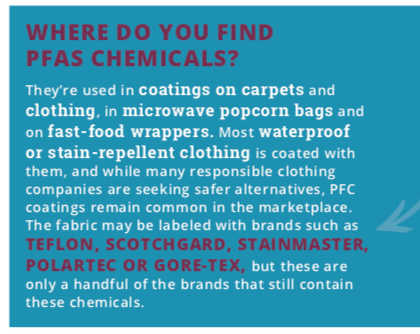
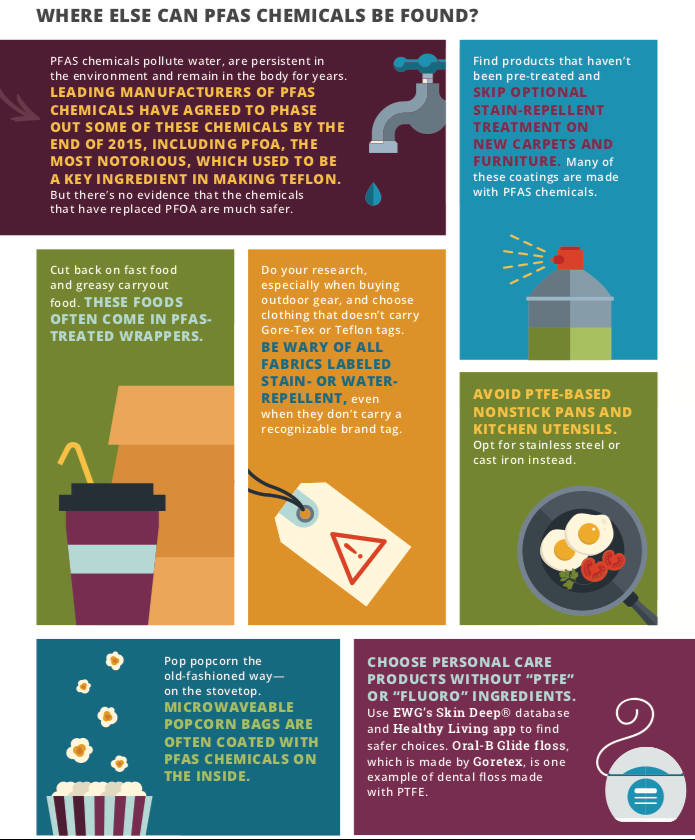
PFAS chemicals were used in thousands of industrial applications and consumer products such as apparels, carpeting, food packaging, firefighting foams, and metal plating. The Centers for Disease Control and Prevention (CDC) has warned that the toxic chemicals are present in the blood samples of the general population. Prior studies have shown the dangerous chemicals have been linked to weakened childhood immunity, thyroid disease, cancer, and other major health issues.
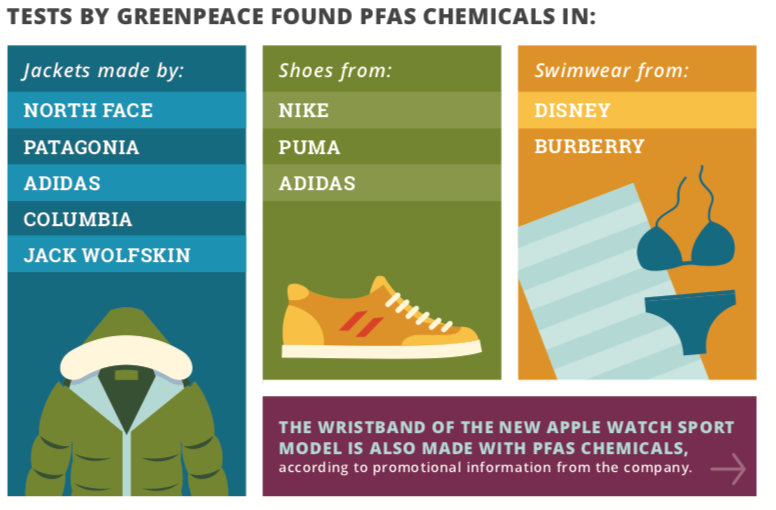
“The Environmental Protection Agency has utterly failed to address PFAS with the seriousness this crisis demands, leaving local communities and states to grapple with a complex problem rooted in the failure of the federal chemical regulatory system,” said Ken Cook, president of EWG. “EPA must move swiftly to set a truly health-protective legal limit for all PFAS chemicals, requiring utilities to clean up contaminated water supplies.”
The map below locates 610 places in 43 states that have dangerously high levels of PFAS chemicals in groundwater. Data from the US Department of Defense and public water utility reports were also included in the map. This additional data shows 117 military sites, including 77 military airports, which have high levels of PFAS firefighting foam.
…click on the above link to read the rest of the article…
California’s central valley aquifers may be gone in 2030s, Ogallala 2050-2070
California’s central valley aquifers may be gone in 2030s, Ogallala 2050-2070
Preface. Clearly the human population isn’t going to reach 10 billion or more. California grows one-third of the nation’s food, the 10 high-plains states over the Ogallala about a quarter of the nations food, and exports a great deal of food other nations as well.
***
December 15, 2016. Groundwater resources around the world could be depleted by 2050s. American Geophysical Union.
Human consumption could deplete groundwater in parts of India, southern Europe and the U.S. in the coming decades, according to new research presented here today.
In the U.S., aquifers in California’s Central Valley, Tulare Basin and southern San Joaquin Valley, could be depleted within the 2030s.
Aquifers in the southern High Plains, which supply groundwater to parts of Texas, Oklahoma and New Mexico, could reach their limits between the 2050s and 2070s, according to the new research.
New modeling of the world’s groundwater levels finds aquifers—the soil or porous rocks that hold groundwater—in the Upper Ganges Basin area of India, southern Spain and Italy could be depleted between 2040 and 2060.By 2050, as many as 1.8 billion people could live in areas where groundwater levels are fully or nearly depleted because of excessive pumping of groundwater for drinking and agriculture, according to Inge de Graaf, a hydrologist at the Colorado School of Mines in Golden, Colorado.
“While many aquifers remain productive, economically exploitable groundwater is already unattainable or will become so in the near future, especially in intensively irrigated areas in the drier regions of the world,” said de Graaf, who will present the results of her new research today at the 2016 American Geophysical Union Fall Meeting.
Knowing the limits of groundwater resources is imperative, as billions of gallons of groundwater are used daily for agriculture and drinking water worldwide, said de Graaf.
…click on the above link to read the rest of the article…
Saudi Arabia Using 140-Year-Old Loophole To Soak Up California’s Scarce Water Supply
Saudi Arabia Using 140-Year-Old Loophole To Soak Up California’s Scarce Water Supply
Saudi Arabia is exploiting a farming loophole in California which allows a tiny, poverty-stricken desert town to use as much water as it needs for agriculture, for free – circumventing harsh water restrictions imposed in the Saudi Kingdom, reports The Guardian.
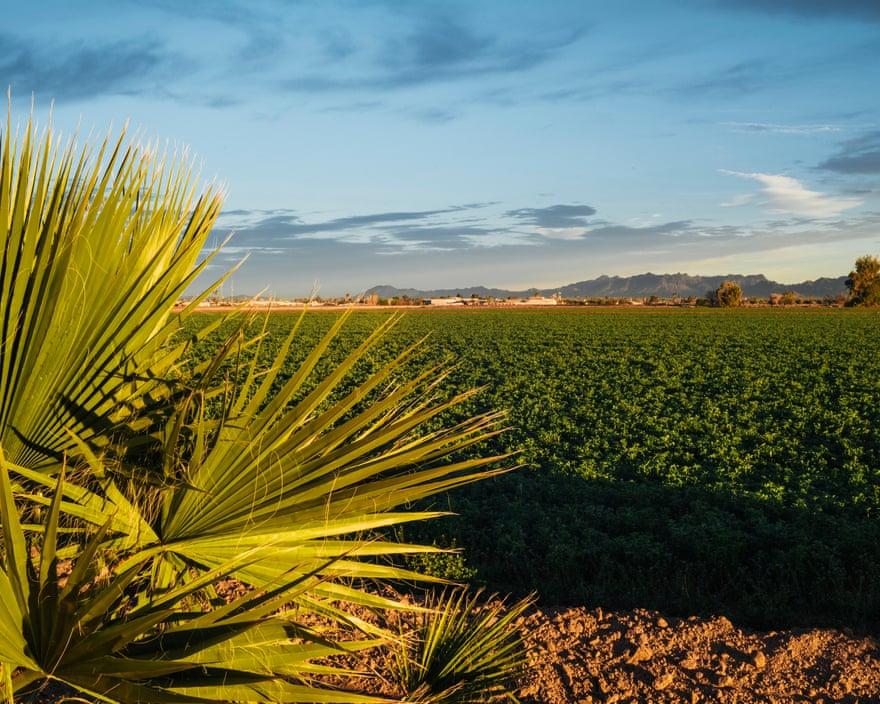
In particular, the Saudis are after alfalfa to feed their cows – setting up shop in Blythe, California – home to roughly 21,000 people (6,000 of whom live in prison) about four hours east of Los Angeles. Fondomonte Farms is a subsidiary of Saudi-based Almarai, one of the largest food production companies in the world. Every month, Fondomonte ships boat-loads of alfalfa to a massive port stationed on the Red Sea, just outside Saudi Arabia’s King Abdullah City.

The state of the Colorado river can be traced, in part, to a water claim approved by the federal government all the way back in the 1800s when a British gold rush-era prospector named Thomas Blythe first laid eyes on the desert expanse adjacent to the rushing Colorado river and submitted a water claim application to the federal government.
That 1877 water claim, now owned by the Palo Verde Irrigation District, ensures that Blythe has “unquantified water rights for beneficial use”; in other words, as much water as those living and farming within the district could possibly need in this water-scarce region, and for free.
…
With the Saudi Arabian landscape there being mostly desert and alfalfa being a water-intensive crop, growing it there has always been expensive and draining on scarce water resources, to the point that the Saudi government finally outlawed the practice in 2016. In the wake of the ban, Almarai decided to purchase land wherever it is cheap and has favorable water conditions to produce enough feed for its 93,000 cows. –The Guardian
…click on the above link to read the rest of the article…
Still Toxic After All These Years

Grist / EuToch / Getty Images / Alison Cassidy
Still Toxic After All These Years
Nearly a quarter-century after winning millions from PG&E, the ‘Erin Brockovich’ town continues its fight for clean water.
It was a sweltering, 117-degree July day in Hinkley, California. The surface of the 13-mile highway east to Barstow had become an asphalt skillet, and the town’s lone recreational feature, a children’s playscape, stood shining and unused like a monument to the lofty melting point of low-density polyethylene. Residents here appreciate the dry, desert landscape — that’s why many moved to Hinkley in the first place — but on days like this everyone takes refuge indoors, curtains drawn against the view of empty lots where neighbors’ houses once stood. Along the empty roads, thousands of pipe stubs — groundwater monitoring wells installed by Pacific Gas and Electric — began to look like air vents to some underground bunker where most everyone in town had retreated.
Despite the oppressive weather, a small group of residents had gathered at the community center for a workshop on bioremediation, basically how to remove chemical contamination from their land and water. These workshops are a regular occurrence here and broach topics like isotope analysis, well testing techniques, and the best ways to navigate the political machinations between oversight organizations. Hinkley-dwellers’ interest in these subjects is more based on survival than scientific curiosity; they want to make sure no one can pull the wool over their eyes again.
Hinkley is still best known as the “Erin Brockovich town.” In 1996 a group of residents famously won a massive direct-action arbitration against Pacific Gas and Electric with the help of Brockovich, a savvy single mom and Los Angeles legal clerk.
…click on the above link to read the rest of the article…
On the Water-Starved Colorado River, Drought Is the New Normal
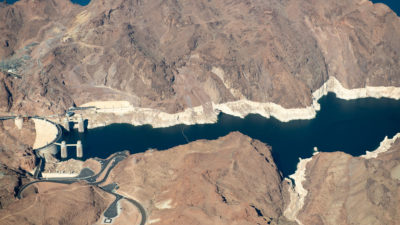
CRISIS ON THE COLORADO: PART II
On the Water-Starved Colorado River, Drought Is the New Normal
With the Southwest locked in a 19-year drought and climate change making the region increasingly drier, water managers and users along the Colorado River are facing a troubling question: Are we in a new, more arid era when there will never be enough water? Second in a series.
In the basement of the University of Arizona’s Laboratory of Tree-Ring Research, the fragrant smell of pine hangs in the air as researchers comb through the stacks of tree slabs to find a round, 2-inch-thick piece of Douglas fir.
They point out an anomaly in the slab — an unusually wide set of rings that represent the years 1905 to 1922. Those rings mean it was a pluvial period — precipitation was well above average — and so the trees grew far more than other years.
“In 1905, the gates opened and it was very wet and stayed very wet until the 1920s,” said David Meko, a hydrologist at the lab who studies past climate and stream flow based on tree rings. “It guided their planning and how much water they thought was available.”
The planning was that of the states that share the water of the Colorado River. Worried that a burgeoning California would take most of the water before it was fairly divvied up, representatives from the other Colorado River Basin states, presided over by U.S. Secretary of Commerce Herbert Hoover, came together in 1922 to develop an equitable apportionment. They looked at flow measurements and figured that the river contained an average of 15 million acre-feet. They divided the Colorado River states into two divisions – the upper basin and the lower basin, with the dividing line in northern Arizona near the Utah border.
…click on the above link to read the rest of the article…




